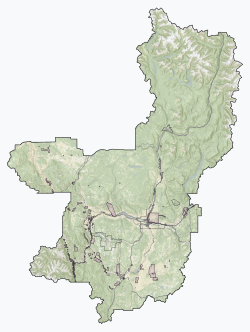Monte Lake | |
|---|---|
| Coordinates: 50°32′00″N119°50′00″W / 50.53333°N 119.83333°W | |
| Country | Canada |
| Province | British Columbia |
| Regional district | Thompson-Nicola |
| Electoral area | Electoral Area L (Grasslands) |
Monte Lake is an unincorporated, seasonally inhabited community located at the north end of the lake of the same name. [1] It lies in a valley connecting the Thompson Country to the Okanagan region in the south-central Interior of British Columbia, Canada. The area has a negligible permanent population, and is not considered a designated place by Statistics Canada, but seasonal residents can number nearly 3,000. On 5th and 6th August 2021, the community was destroyed by the White Rock Lake fire. [2]

